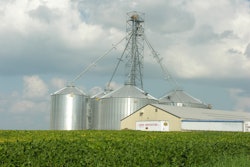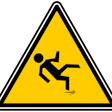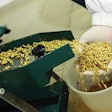As the Food and Drug Administration picks up the pace in promulgating Food Safety Modernization Act rules, feed facilities and suppliers are working against the clock to prepare for some of the biggest regulatory changes the feed industry—with its 900 ingredients and facilities and suppliers of all sizes—has ever faced.
“I think a lot about the ability of our industry to be sophisticated at all levels to absorb, understand and implement these kinds of controls. We’re not really sure we can do this at all levels in an 18-month timeframe,” said Richard Sellers, American Feed Industry Association vice president of feed regulation and nutrition.
The first major reform of food safety laws in seven decades, the Food Safety Modernization Act was enacted in January 2011. While much was made of how the new law would affect the food industry, the feed sector will be significantly impacted as well as the law applies to all FDA-regulated food and facilities, including grain elevators, animal- and pet-feed ingredient manufacturers, grain millers and processors.
“If you process, manufacture, store or sell animal feed, FSMA regulations will apply to you,” explained Kelli Ludlum, American Farm Bureau Federation food safety specialist.
One of the most basic requirements of the law—that feed facilities re-register with FDA every few years—is already causing some confusion.
Food or feed facilities that were required to register with FDA under the Bioterrorism Act of 2002 now have to renew their registration every even-numbered year between October and December, beginning in 2012. Under the 2002 law, registration was permanent.
Acknowledging that word about the re-registration requirement had not gotten around as well as it should have, FDA extended the December 2012 deadline to January 2013. Still, as many as 2,000 feed facilities may have been dropped from the registration list after failing to re-register because they didn’t know about the new rule.
“That’s a big concern of ours,” Sellers said. “Firms, if they have not, need to immediately re-register their facilities under the Bioterrorism Act so there’s an accurate list.”
Hazard identification and risk management plans required
FSMA addresses three broad areas: preventative measures, detection and response measures and imported foods.
Under the preventative measures area of focus, feed companies are required to identify any hazards and write a risk management plan to control those hazards. The plan, which must be available for FDA to review and copy, encompasses several areas and requires facilities to keep related records for two years.
Hazard identification and risk management plans are central to the law. They are not, however, requirements for Hazard Analysis and Critical Control Points (HACCP) certification or a HACCP plan.
“The preamble to the related rules references HACCP in comparing FSMA to existing programs, which is understandably confusing to some,” Seller explained.
For help meeting the new preventative control requirements, AFIA is encouraging companies to consider its Safe Feed/Safe Food program, which is a voluntary third-party certification program based on HACCP principles. In addition, once the FSMA rules are finalized, the organization plans to make any needed adjustments to the Safe Feed/Safe Food program to make it FSMA-compliant.
The rules for feed are separate from those for food and are due out in a little less than a year and a half.
New inspection and recall authority for FDA
The detection and response section of the law gives FDA the authority to increase facility inspections. The agency is supposed to create regulations for low- and high-risk facilities. All low-risk facilities will be inspected within five years of the date of enactment and again every seven years. High-risk facilities, which are likely to be those that have had inspection problems or have high-risk products, will be inspected within three years of enactment and once every five years after that.
Facilities that are up for inspection should be prepared with a plan for employees during the inspection. The plan should include which employees will be working with FDA during the inspection, where the necessary documents are filed and how the facility will address any issues that arise from the inspection.
Also related to detection and response, feed companies that are required to register with FDA will be expected to participate in updating the Reportable Food Registry, when necessary. Such reports should be made less than 24 hours after a company learns of a reasonable probability that the use of or exposure to a certain food will cause harm to humans or animals.
There are also traceability responsibilities tied to reporting. Reporting companies may have to notify others in the chain of commerce, so staying on top of recordkeeping is essential to ensuring the right people and companies are contacted.
FSMA gives new authority to FDA to issue a mandatory recall, although the agency must first request a voluntary recall from the firm responsible for the product. The FDA commissioner is the only person who can issue the recall, and the authority may be used only for serious adverse consequences or death in humans or animals.
Importers must verify foreign suppliers meet U.S. standards
In the area of imported products, under the proposed Foreign Supplier Verification Program (FSVP) rules, importers, defined as the owner of a food item or ingredient when it enters the U.S., are required to conduct in-person risk-based verifications of foreign suppliers to make sure they meet the same hazard identification and written risk management program requirements U.S. firms do. FDA expects importers to keep the records associated with this verification for two years.
“This rule tells you what you have to do to go overseas and look at a facility, and what kind of records you have to have,” Sellers said. However, because the rules related to “what those controls are and what those records have to look like for feed have not been released, we’re sitting on part of the story, but not the whole story.”
Proposed in late July along with the FSVP rules, rules related to the accreditation of third-party auditors would establish a program through which qualified third parties can certify that foreign food facilities comply with U.S. food safety standards. The third-party auditors, also known as certification bodies, will conduct food safety audits and issue certifications of foreign facilities and the foods for humans and animals they produce.
“This provision says if you don’t go over [to the foreign facility] and you don’t visit at periodic intervals, you can use an FDA-recognized third-party, such as one of 30 foreign governments that will be recognized as having a sophisticated regulatory system, a private third-party certification program or another association FDA recognizes,” Sellers said.
FDA will have to determine what it requires for these third-party entities to gain recognition.
Importers will not generally be required to obtain certifications, but in certain circumstances FDA may use certifications from accredited auditors to help determine whether to admit certain imported food into the United States that FDA has determined poses a food safety risk. FDA may also use third-party auditors to determine whether an importer is eligible to participate in a voluntary program that will speed-up the review and entry of food.
In addition, under FSMA, FDA has the ability to refuse entry into the U.S. of food from a foreign facility if FDA is denied access by the facility or the country in which the facility is located.
Court establishes timeline
By a court order issued on June 21, FDA must publish all outstanding proposed rules, of which there were five, including those related to preventative control for feed, by Nov. 30, 2013. Additional outstanding rules are connected to international contamination and sanitary transport of food and feed. All comment periods for these proposals must close by March 31, 2014, and the final regulations have to be published by June 30, 2015.
The court order stems from a suit filed in August 2012 against the FDA by the Center for Food Safety and the Center for Environmental Health. The groups were trying to compel the agency to implement what they considered were long-overdue provisions of the FSMA. This April, the U.S. District Court for the Northern District of California agreed FDA had failed to meet the deadlines established by Congress. Because FDA and the Center for Food Safety and the Center for Environmental Health could not agree on a timetable for deadlines, as directed by the court, the court issued its own deadlines.
Still awaiting the feed rules, the industry faces some considerable challenges with such a tight timeline. For example, feed facilities will have to deal with modified Good Manufacturing Practices (GMPs), which are not part of FSMA, and FSMA’s new preventative controls at the same time.
“It would be nice if we could do the GMPs first, let them operate for a few years, then do the preventive controls,” Sellers said. “FDA says that’s not possible because they’re under a strict deadline to get the preventative controls out, so they’ll do the GMPs at the same time.”
Only roughly one-quarter of feed manufacturers have dealt with GMPs before, so these new requirements will be a significant challenge.
“You have to go through this hazard identification and create these huge preventive controls, validate the system, verify it’s working, take corrective action when it isn’t and keep records for two years,” Sellers said. “Those are all the things that are laid out in FSMA and they’re quite complicated.”
.jpg?auto=format%2Ccompress&crop=faces&fit=crop&h=48&q=70&w=48)


















